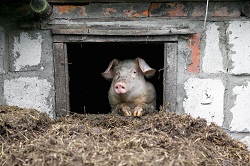CHL-resistance in SE Asian aquaculture products
ASIARESIST investigated antimicrobial resistance in bacteria in aquaculture products sourced from south East Asia and imported into Europe. Antimicrobials are widely used in Southeast Asian fish farms, leading to concerns that this may result in the development of antimicrobial resistant bacteria. This could compromise public health and threaten productivity and the local economy. Therefore, it was crucial that the proper hazard control measures were adopted for efficient management of the ecosystem. The ASIAREST project undertook to reliably identify bacteria resistant to the antimicrobial chloramphenicol (CHL) by initially using repetitive chromosomal element-polymerase chain reaction analysis (repPCR.). According to the profiles obtained possible duplicate CHL were identified and put to one side. The remaining samples were subject to gas-liquid chromatographic analysis of cellular fatty acid methyl esters (FAMEs). The FAME profiles for unknown samples were compared with the general TSBA database in an attempt to classify them, at least to the bacterial family level. This enabled the first comprehensive account to be drawn-up for CHL resistant bacteria in Southeast Asian aquaculture.







